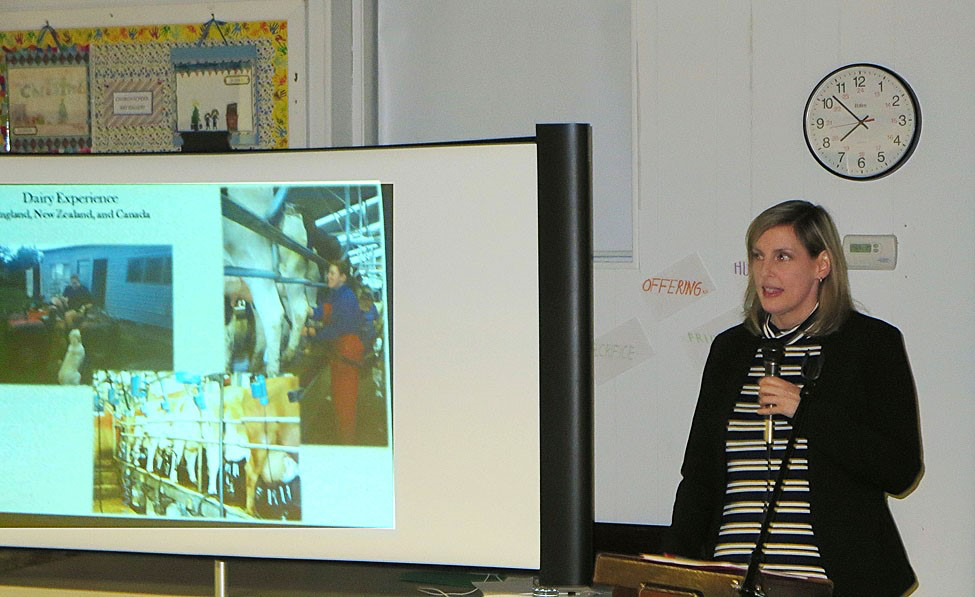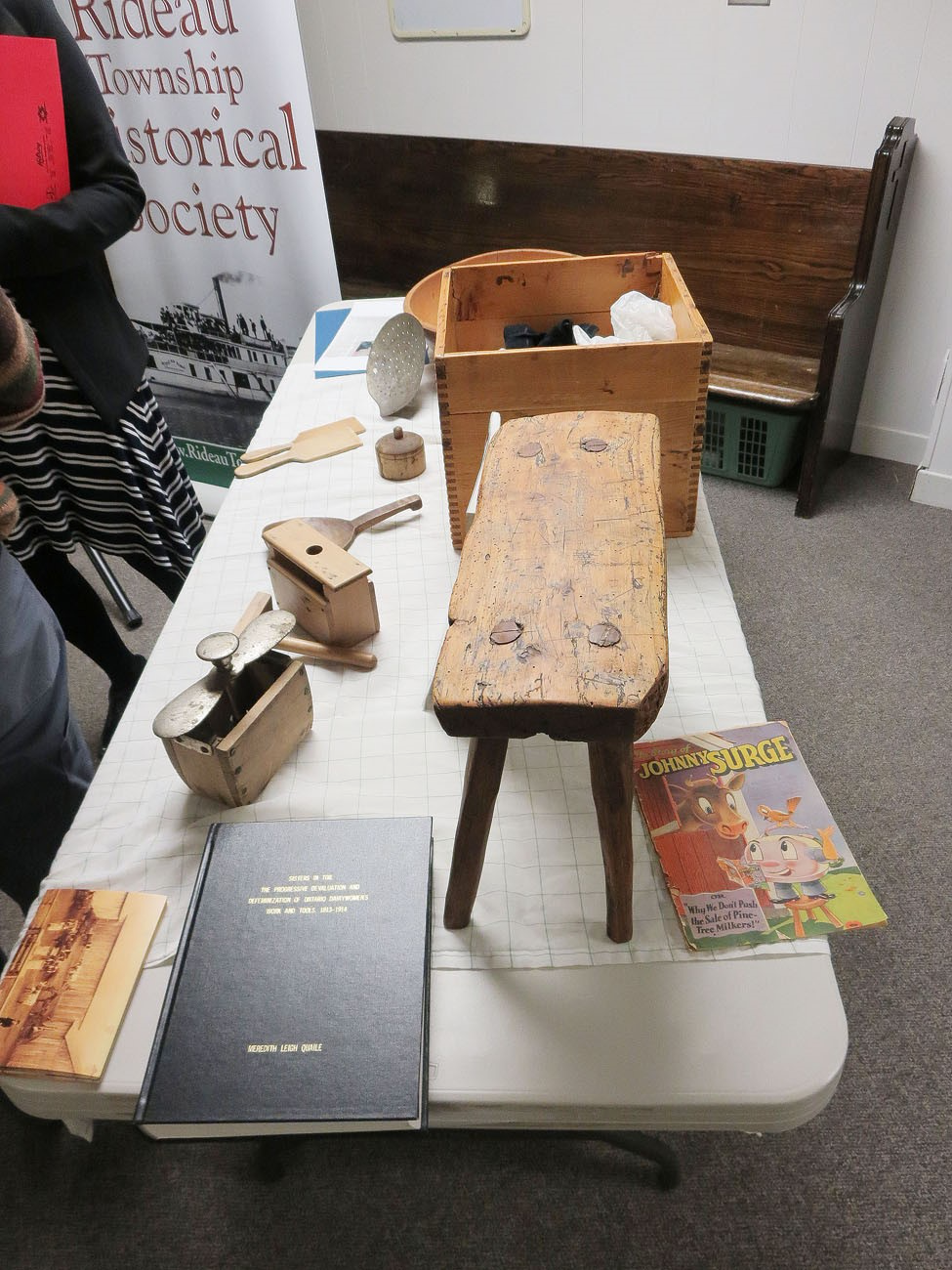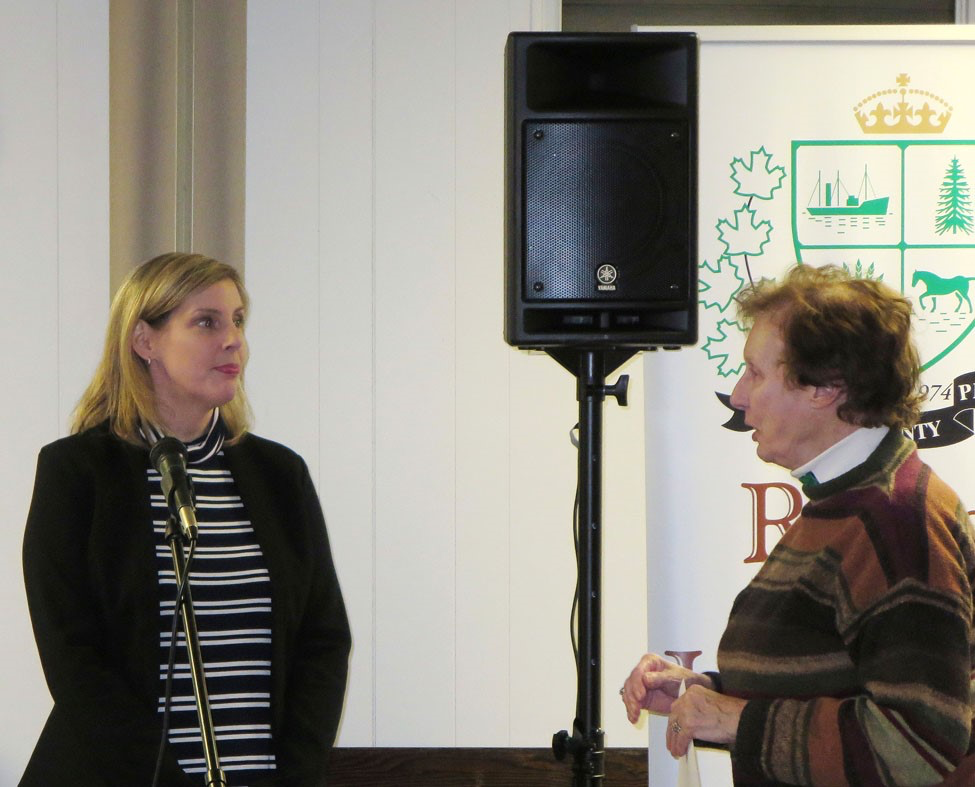Women in Dairy Farming
Women in Dairy Farming
Presenter: Dr. Meredith Quaile. Article by Pat Earl. Photos by Owen Cooke. February 2017.
On Wednesday, February 8th, Dr. Meredith Quaile gave a very inspiring talk on women’s role in dairy farming. She entitled her talk ‘Grass and Sunshine into Cream and Butter’. Dr. Quaile, a Russell Federal government policy analyst, wrote a two hundred page thesis on this topic, focusing on the time between 1813 and 1914.
Growing up in Greely, her interest in women on the dairy farm was sparked when she worked as a tour guide at the Experimental Farm. Dr. Quaile’s research took her to local regional museums, heritage homes, England, and New Zealand where she worked on a farm while there.
She spent many hours scouring farming magazines, books, old photographs, basements, barns and sheds, seeking for tools used by women on the dairy farms. The result of all her research was put together in a delightful, and captivating presentation for our RTHS members at Knox Presbyterian Church.
Using a series of fifteen photos, Dr. Quaile introduced us to women at work on the farm.
1. The Brownlee Farm - A staged photo of the Brownlee farm, taken in 1893, showed a well off family, their extensive herd of 15 cows and 5 horses, a large well ventilated barn, a fenced in yard complete with turnstile and a few of the necessary farming tools.
2. Mrs. Otto and her Cow.
3. An 1887 Dasher Churn - A staged photo of women working a cream separator in an orchard – something which never would have been done.
4. Cream Separators - Cream separators changed and improved over the years but usually due to limited finances the new models were not deemed necessary. Women had no control over the purse strings in the family and therefore on most farms change was slow and the tools remained limited to old styles.
5. Billings Estate - Lamira Billings and her daughters were exceptional dairy women. Mrs. Billings kept diaries of their work. A former teacher, healer, and herbalist, she recorded many things.
6. Pans - Shallow pans were made of wood or local iron and were used for separating the cream.
7. Basic Tools - Stools, pails – made of wood or leather – these were sturdy, cheap and repairable, and most important of all, hand made.
8. Cream separator pans - Shallow pan, deep pan – these were the basic types used by most women. · Later centrifugal machinery replaced the pans and revolutionized dairying.
9. Butter Churns - Mabel Thom using a dasher churn; an end over end barrel churn; samples of over 1,000 types. · A seated treadle churn made of wood, later crockery; A spring churn
10. Butter working - The butter was washed, salt was added, and using a bowl and a ladle the butter was worked until all excess water was removed. If too wet, the butter would soon become rancid.
11. Butter Presses/Prints _ Farmers branded their own butter · Butter was sold locally or traded with neighbours · Scotch hands –corrugated wooden paddles- were used to press the butter into boxes or forms for branding · Later, with the opening of creamery factories, butter was formed into a one pound brick, wrapped in cheese cloth or waxed paper and placed in twenty pound boxes for shipping. Ontario butter was considered quality butter and was shipped to the United States and Britain.
12. Milking Machines at Guelph Agricultural School - From 1907 pail and hands to a surge milker, a vacuum line using electricity or a generator.
13. A Mehring foot treadle milker
14. Ads for Dairy Equipment - Ads portraying women in dairy work using Milk Maid and Dairy Queen Separators
15. Milking machines 1910 -1918 - Dairy Maid Milker, and a DV milking machine With the onset of machinery, women were considered no longer capable of doing the milking and the job passed on to the men of the family. For the ladies, it was to be a great relief from sore hands and kicking cows. However, because of the expense, the old methods were utilized until after World War 1, with the farm women out in the fields a couple of times a day, adding hours to their daily routine.
Dr. Quaile’s presentation was both entertaining and informative and after a few questions and answers we all left with an appreciation of farm women of the past.



